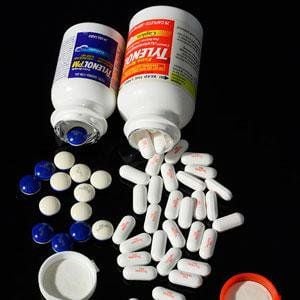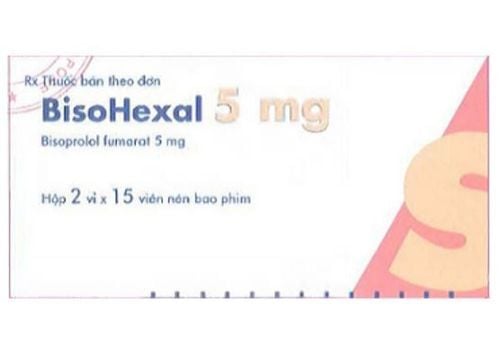1. What is Lercanidipine?
Lercanidipine is a dihydropyridine calcium-channel blocker, typically formulated as 10mg or 20mg tablets. Its antihypertensive effect is directly related to its action of relaxing smooth muscle in blood vessels. The vasodilatory effect of Lercanidipine occurs gradually, rarely causing hypotension with reflex tachycardia in hypertensive patients.
Indications for using Lercanidipine alone or in combination with other medications to treat hypertension.
Contraindications for Lercanidipine:
- Individuals with hypersensitivity or allergy to the active ingredient or excipients;
- Patients with unstable angina;
- Patients who have recently had a myocardial infarction within one month;
- Patients with severe renal impairment (Clcr below 10ml/min), including those on dialysis;
- Patients undergoing peritoneal dialysis;
- Patients with severe liver impairment;
- Patients with congestive heart failure who are not being treated;
- Concurrent use with cyclosporine, strong CYP3A4 inhibitors, grapefruit, or grapefruit juice.
2. Dosage and Administration of Lercanidipine
Lercanidipine is taken once daily in the morning, at least 15 minutes before a meal. It - Lercanidipine - should be taken with a small amount of water and not with grapefruit juice.
Dosage:
- Adults: An initial dose of 5mg may be suitable for some patients. The usual dose is 10mg once daily. The dose may be increased to 20mg daily if necessary, after at least 2 weeks. If blood pressure control is not achieved, Lercanidipine can be combined with another antihypertensive;
Children: Safety and efficacy of Lercanidipine in children under 18 years have not yet been established; - Elderly: Although pharmacokinetic data and clinical experience suggest that dose adjustment is not necessary in elderly patients, caution is advised when starting treatment in older adults;
Patients with liver or kidney impairment: Caution is advised when starting Lercanidipine in patients with mild to moderate liver or kidney dysfunction. Although the recommended dosing regimen may be tolerated, increasing the dose to 20mg daily should be done cautiously, as the hypotensive effect may be increased in patients with liver impairment.
Overdose of Lercanidipine may lead to excessive peripheral vasodilation, resulting in significant hypotension and reflex tachycardia. However, at very high doses, peripheral selectivity may be lost, leading to bradycardia and negative inotropic effects. The most common symptoms of Lercanidipine overdose are hypotension, headache, dizziness, and palpitations.
General principles for managing overdose include gastric lavage, activated charcoal, and maintaining vital functions (ventilation, oxygen therapy, respiratory and circulatory resuscitation). In cases of arrhythmias, especially bradycardia (due to beta-adrenergic blocker use) in at-risk patients, temporary pacing may be required.
In cases of significant Lercanidipine overdose, calcium gluconate solution may be administered to maintain heart rate and cardiac output. Due to the prolonged action of Lercanidipine, cardiovascular effects should be monitored for at least 24 hours.
If a dose of Lercanidipine is missed, the patient should take it as soon as they remember. If it is close to the next dose, the missed dose should be skipped, and the next dose should be taken as originally prescribed.
3. Side Effects of Lercanidipine
When using Lercanidipine, patients may experience some side effects such as:
- Common: Palpitations, orthostatic hypotension, facial flushing, peripheral edema, headache, rash, tachycardia, diuresis;
- Uncommon: Dizziness, nausea, low blood pressure, gastrointestinal disturbances, upper abdominal pain, polyuria, muscle pain, weakness, fatigue;
- Rare: Hypersensitivity, lethargy, chest pain, angina, urticaria, vomiting, diarrhea;
- Frequency not determined: Angioedema, gingival hyperplasia, increased transaminases.
Patients experiencing side effects from Lercanidipine should promptly notify their doctor for appropriate management.
4. Cautions When Using Lercanidipine
Some points patients should remember before and while taking Lercanidipine:
- In cases of heart failure or left ventricular dysfunction, hemodynamic status should be closely monitored;
- Some short-acting dihydropyridines may increase the risk of cardiovascular events in patients with coronary artery disease. Although Lercanidipine has a prolonged effect, caution is still advised when used in patients with coronary artery disease;
- Caution is advised when using Lercanidipine in patients with sick sinus syndrome;
- Animal studies have shown no evidence of teratogenicity or embryotoxicity with
- Lercanidipine. However, there is insufficient data to assess the efficacy and safety of this drug in pregnant women. Therefore, it is best to avoid using Lercanidipine during pregnancy;
- There is currently insufficient data on the excretion of Lercanidipine in breast milk. To ensure safety, this drug should not be used during breastfeeding;
- Lercanidipine may cause dizziness, fatigue, weakness, and drowsiness, so caution is advised when driving or operating machinery.
5. Drug Interactions with Lercanidipine
Some drug interactions with Lercanidipine include:
- Baclofen increases the antihypertensive effect of Lercanidipine when used concurrently. Therefore, arterial blood pressure should be monitored, and dosage adjustments made if necessary;
- Rifampicin reduces the plasma concentration of calcium channel blockers (Lercanidipine) due to increased hepatic metabolism. Therefore, clinical response should be monitored, and Lercanidipine dosage may need adjustment when used with rifampicin;
- Anticonvulsants that induce enzymes (such as carbamazepine, phenytoin, primidone, phenobarbital) decrease the plasma concentration of dihydropyridines due to increased hepatic metabolism. Therefore, clinical response should be monitored, and dosage adjustments may be necessary when used with enzyme-inducing agents;
Amifostine increases the antihypertensive effect of Lercanidipine; - Alpha-adrenergic blockers (such as terazosin, prazosin, alfuzosin, tamsulosin) enhance the antihypertensive effect of Lercanidipine, leading to the risk of orthostatic hypotension;
- Concurrent use of Lercanidipine with beta-adrenergic blockers increases the risk of hypotension and heart failure in patients with latent heart failure or uncontrolled conditions. The presence of a beta-adrenergic blocker may also reduce the sympathetic reflex of dihydropyridines;
- Concurrent use of Lercanidipine with tricyclic antidepressants (imipramine group) or antipsychotics may increase the risk of orthostatic hypotension;
- Concurrent use of Lercanidipine with corticosteroids, tetracosactide, except for hydrocortisone replacement therapy in Addison's disease, may reduce the antihypertensive effects of Lercanidipine (due to the water-retaining effects of corticosteroids);
- Lercanidipine should not be used concurrently with CYP3A4 inhibitors such as ritonavir, erythromycin, ketoconazole, itraconazole, troleandomycin, clarithromycin;
- Concurrent use of Lercanidipine with grapefruit juice increases the risk of side effects (especially edema) due to reduced hepatic metabolism of Lercanidipine;
- Alcohol should be avoided during Lercanidipine treatment as it may enhance the vasodilatory antihypertensive effect;
- The bioavailability of Lercanidipine increases if taken after meals.
When prescribed Lercanidipine, patients should follow the guidance and establish a reasonable diet, rest, and exercise regimen. This helps patients manage blood pressure better and avoid unpredictable complications.
Please dial HOTLINE for more information or register for an appointment HERE. Download MyVinmec app to make appointments faster and to manage your bookings easily.
To arrange an appointment, please call HOTLINE or make your reservation directly HERE. You may also download the MyVinmec app to schedule appointments faster and manage your reservations more conveniently.








